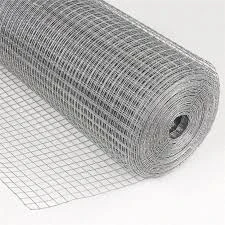10 月 . 30, 2024 18:32 Back to list
field wire fence
Understanding Field Wire Fences A Practical Guide
Field wire fences, also known as agricultural fences, serve as vital structures in rural settings, primarily used to mark boundaries, contain livestock, and protect crops. These fences have become a staple for farmers and landowners due to their durability, versatility, and cost-effectiveness. Knowing the basics about field wire fencing can help in making informed decisions regarding installation, maintenance, and overall utility.
1. Composition and Types of Field Wire Fences
Field wire fences are typically made from high-tensile steel wire, which provides strength and resistance against harsh weather conditions. They come in various configurations, including barbed wire, woven wire, and electric versions. Barbed wire is crafted with sharp protrusions and is often used to deter intruders or livestock from escaping. Woven wire, comprising multiple horizontal and vertical wires, offers enhanced security and is particularly effective for containing smaller animals like sheep and goats. Electric fences, on the other hand, deliver a mild shock to deter animals from crossing the boundary.
2. Installation Process
Installing a field wire fence requires careful planning and execution. The first step involves measuring the area to establish the perimeter. It’s crucial to check local regulations, as some areas have specific posting rules regarding fencing. Next, fence posts must be set at regular intervals—usually 8 to 12 feet apart—deep enough to provide stability. In many cases, wooden or metal posts are preferred for their resilience.
Once the posts are in place, the wire can be attached. It is essential to maintain tension in the wire to ensure it remains taut, preventing sagging or breaking. Depending on the design, tools such as fence stretchers or torque wrenches may be required to achieve the optimal tension. Finally, finishing touches such as adding gates and ensuring the fence line is clear of vegetation will enhance functionality.
field wire fence

Although field wire fences are built to last, regular maintenance is necessary to prolong their lifespan. Inspecting the fence periodically for signs of damage, such as rust, breakage, or compromised posts, is crucial. Worn wire should be replaced promptly to maintain security. Additionally, it’s essential to keep the fence line clear of weeds and shrubs, which can promote the growth of invasive plants and compromise fence integrity.
4. Benefits of Field Wire Fences
Field wire fences offer various benefits to landowners and farmers. Firstly, they provide a reliable solution for containing livestock, ensuring animals remain safe and secure. This is particularly important in commercial farming, where losses due to roaming livestock can be significant. Secondly, these fences contribute to better land management, helping to prevent overgrazing and allowing for proper pasture rotation.
Furthermore, field wire fences can significantly enhance property value. A well-maintained fence not only marks boundaries clearly but also presents a professional appearance, which can be appealing to potential buyers or renters.
Conclusion
In conclusion, field wire fences are an essential investment for anyone looking to manage land effectively. Their robustness, ease of installation, and low-maintenance requirements make them an ideal choice for agricultural settings. By understanding the types, installation processes, and maintenance needs of field wire fences, landowners can take advantage of the numerous benefits these structures offer, ensuring the safety of their livestock and the integrity of their land for years to come.
-
Secure Your Roof with Quality Roofing Nails
NewsNov.04,2024
-
Secure Your Property with Quality Field Fencing
NewsNov.04,2024
-
Enhance Your Space with Quality Mesh Fencing
NewsNov.04,2024
-
Discover the Versatility of Iron Wire for Your Projects
NewsNov.04,2024
-
Discover the Versatility of Common Nails for Your Projects
NewsNov.04,2024
-
Discover Quality Hydraulic Fittings for Your Applications
NewsNov.04,2024









